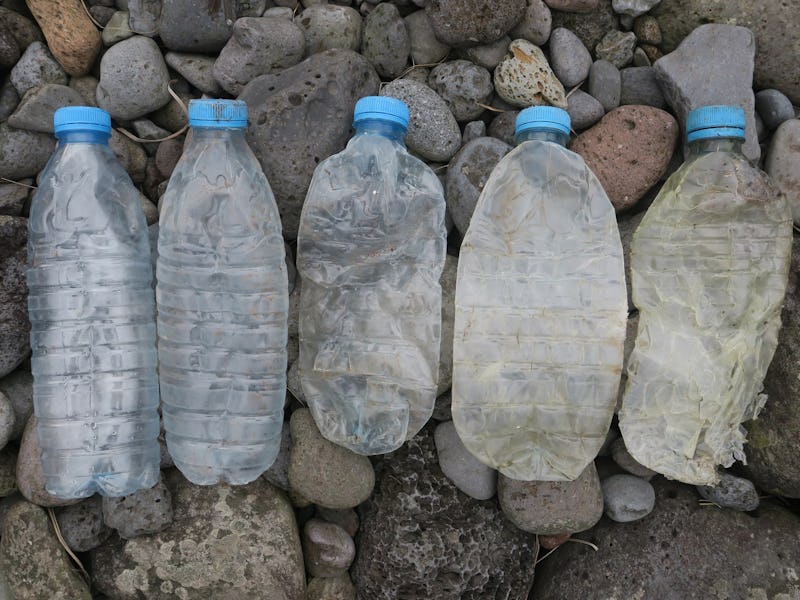Shocking amounts of plastic smother this uninhabited island in the Atlantic
Inaccessible Island is full of garbage, and the problem is getting worse every year.

Inaccessible Island couldn’t be more appropriately named. The tiny, uninhabited piece of land halfway between Africa and South America is many, many miles from anything. It is also covered in plastic bottles.
Where the hell did it all come from? To answer that question, researchers tracked plastic coming onto the island for two months in 2018. The results, published in a September 2019 study in Proceedings of the National Academy of Sciences, provide some clues.
This is #14 on Inverse’s 20 most incredible stories about our planet from 2019.
The researchers looked at bottles specifically, finding that most of that plastic waste came from East Asia. The chance of all those plastic bottles floating their way over by chance is pretty slim, the team argues. Which begs a new question: How the hell did it all get there?
“[A] small proportion of the bottles originating from India and Southeast Asian countries might reach the South Atlantic from the Indian Ocean via the Agulhas Current, but this will take 3 to 5 [years],” the researchers said at the time.
“Debris originating from China, Taiwan, Japan, and Korea is mostly entrained into the North Pacific, with very little chance of drifting to the South Atlantic.”
This bottle has been colonized by goose barnacles.
Most of the bottles were stamped with a date within two years of the study — so it’s highly unlikely that the plastic bottles appeared on their own at Inaccessible Island. Instead, the likely culprits are ships dumping their trash overboard into the ocean.
Plastic is pretty much everywhere, the researchers said. And more bottles are popping up on the island’s shores every year.
In fact, bottles outpace other types of debris landing on Inaccessible Island. The number of plastic bottles have increased at more than twice the rate of other trash during the last three decades, the researchers found.
As water accessibility continues to threaten communities across the globe, bottled water is a necessity in some places. For that reason and others, the industry is growing at a rapid pace — increasing in size by 8.5 percent per year, the researchers say. As a whole, bottled water is projected to be worth $280 billion by 2020.
As 2019 draws to a close, Inverse is revisiting the year’s 20 most incredible stories about our planet. Some are gross, some are fascinating, and others are truly incredible. This has been #14. Read the original article here.